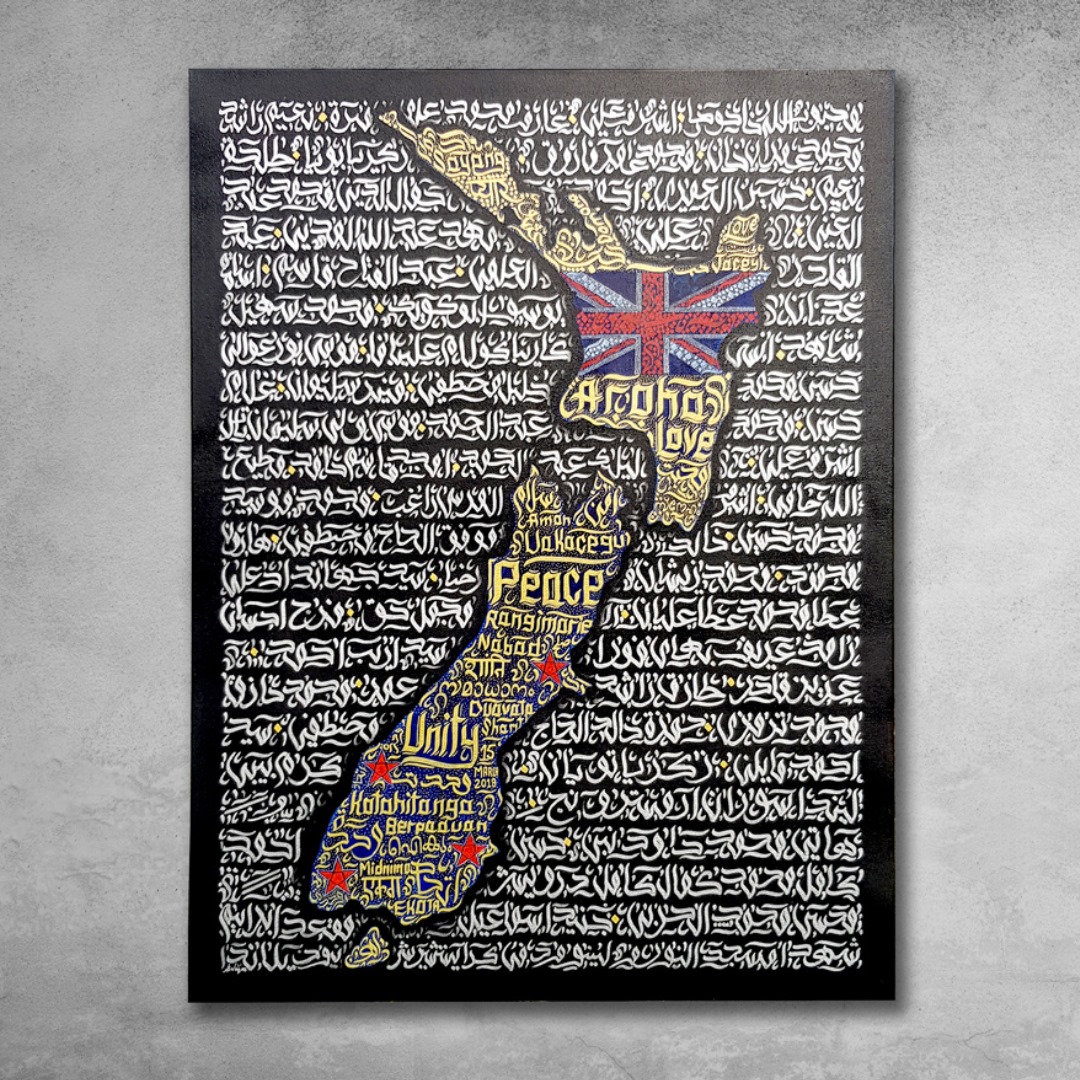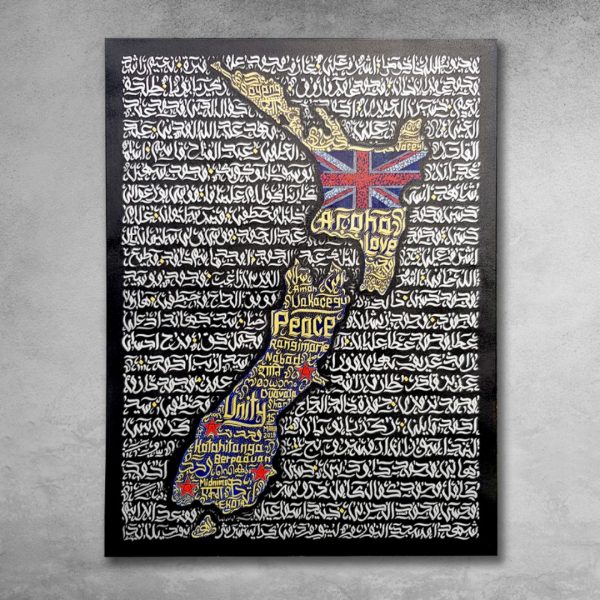If the millions in welfare and nationally broadcast call to prayer was not enough appeasement, now this imitation Kaaba cloth covers NZ parliament entrance-ways. The Royal Commission report found Brenton Tarrant had nothing to do with New Zealander’s, but was rather influenced by Islamic behaviour overseas, including no doubt the jihadi influence in Australia in recent years. His target was selected because of the Dunedin Mosque video.
Incidentally, according to the hadiths, their prophet forbid his followers to make images (a command which also counts out profile pictures?).

In the Beehive sits a detailed, graphic piece of calligraphy, hanging neatly in view of every visitor to our country’s halls of power.
51 was made by Wellington-based Islamic artists Muhammad and Sameera Waqas to mark the second anniversary of the terror attacks at Christchurch’s Masjid An-Nur (Al Noor mosque) and the Linwood Islamic Centre. It is currently hung in Parliament’s foyer, where it will remain until May 3.
Written on a black background in Arabic Al-Sunbali script are the names of the 51 people who died on March 15, 2019. At the art work’s centre is a map of New Zealand, which shapes out from calligraphy written in 10 different languages, representing the victims’ countries of origin.
The colours and patterned style of background script are inspired by Kiswah, the cloth that covers the Kaaba in Mecca, Saudi Arabia, while New Zealand flag colours were used for the map to represent patriotism and loyalty.
“We as a country of diverse communities need a map to navigate towards peace, towards an identity that can grow and be flexible and include many communities. The idea of a shared identity, equality, humanity, peace and prosperity forms the fundamentals of Islamic faith,” Muhammad said.

Maori kupu (words) have also been used throughout to honour the support Maori had given Aotearoa’s Muslim community.
The Waqas, who are both part-time artists, have been living in Wellington for more than four years. Muhammad said the work took about three months to complete.
“We want to spread the message of love, peace and unity. We believe this is something really important – it’s the key to coexistence in a multicultural society.”

Originally unveiled in Kilbirnie Mosque, 51 was shown in Wellington Museum and Shed 6 before making its way to Parliament’s foyer – where visitors who come on Beehive tours stay for about 15 minutes – enough time to observe it in detail.
As well as Arabic, English and Maori, other languages featured include Urdu, Hindi, Fijian, Somali, Malay, Malayalam and Dari.
Muhammad Waqas previously designed the Christchurch incident reports for the Federation of Islamic Association of New Zealand, and worked with Ruth Robertson-Taylor in developing the Weaving hope mural in Wellington’s Civic Square.


